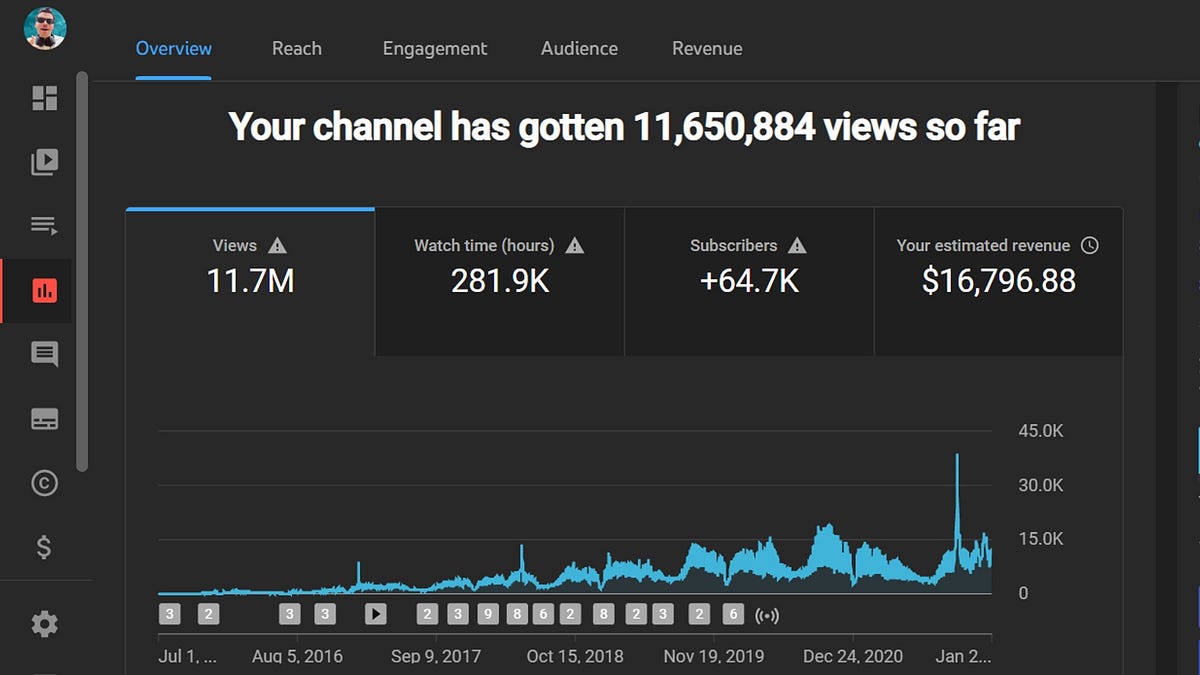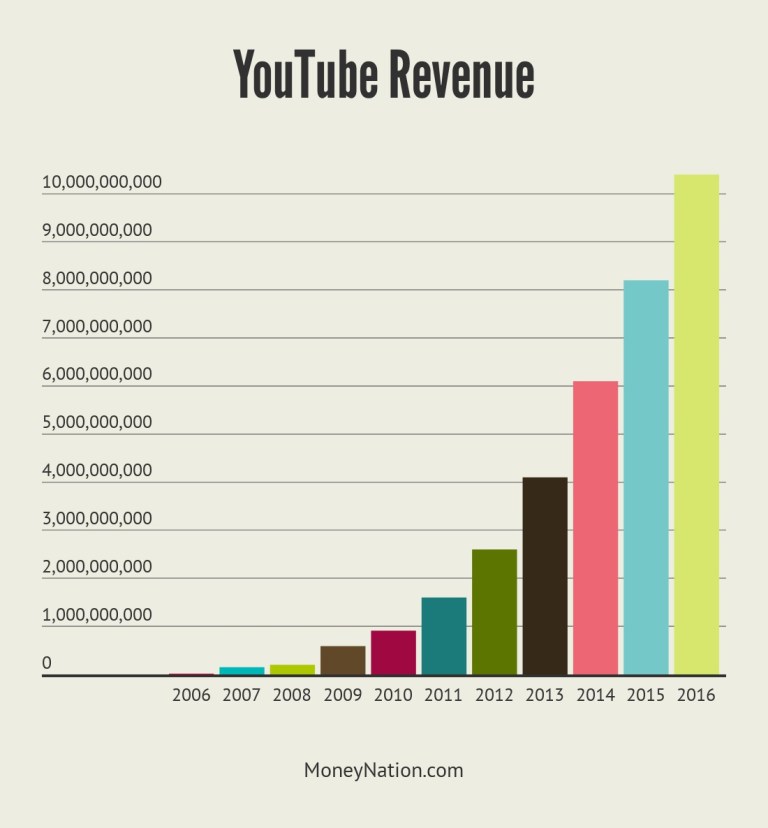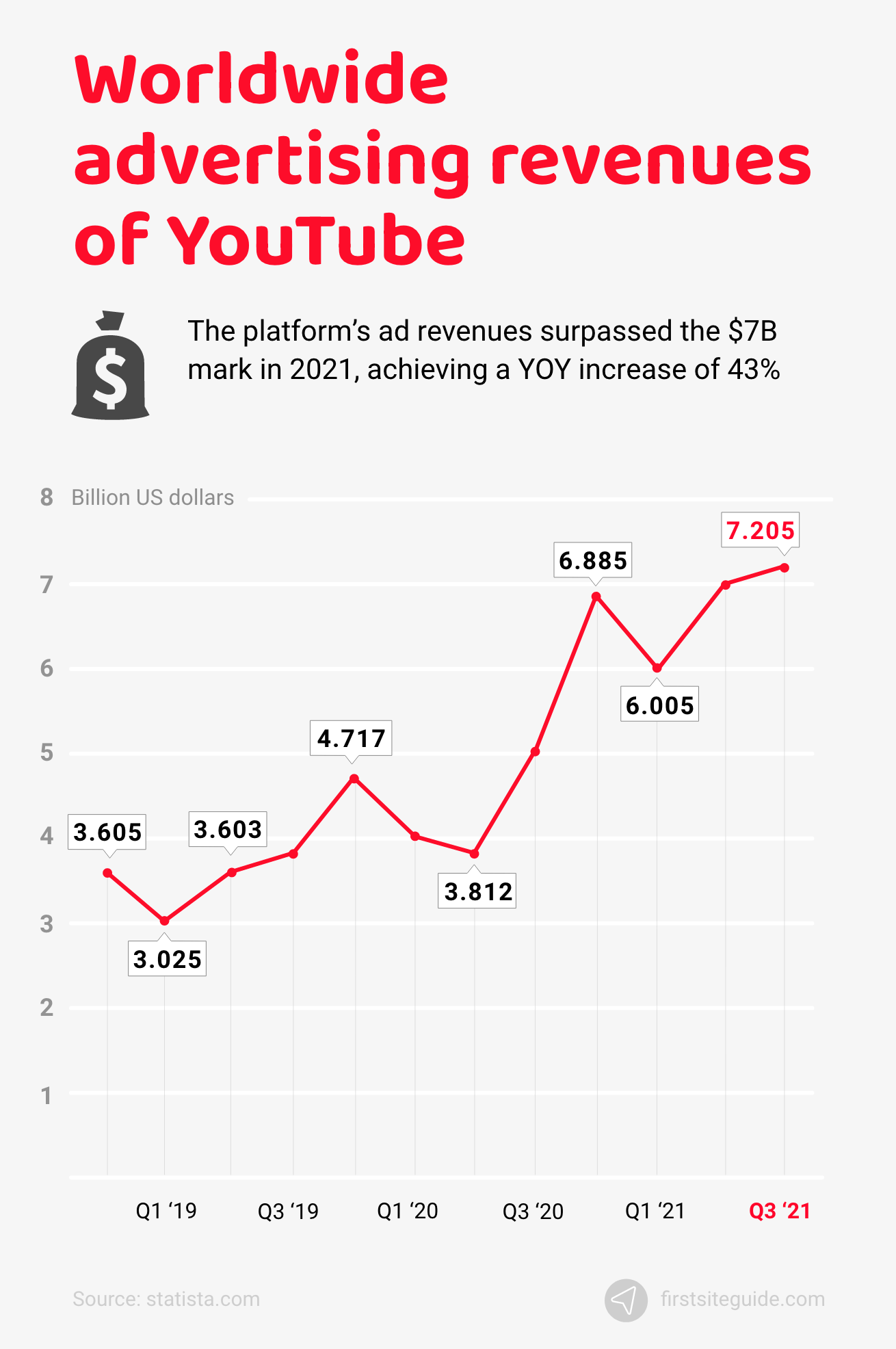Welcome to the exciting world of YouTube! If you've ever wondered how creators cash in on their million-view videos, you’re in the right place. YouTube isn’t just about likes and shares; it’s a treasure trove of revenue opportunities. From ad revenue to merchandise sales, the platform offers various streams that can contribute to a creator’s income. Whether you’re a budding content creator or just curious, understanding these revenue streams is essential to grasping how
The Basics of YouTube Monetization

Monetizing your YouTube channel is the gateway to making money from your content. But how does it all work? Let’s break it down into the main components:
- Ad Revenue: This is the most common revenue stream. YouTube pays creators a share of the ad revenue generated from ads displayed on their videos. This income varies based on views, viewer engagement, and the type of ads.
- Channel Memberships: If you have at least 30,000 subscribers, you can offer channel memberships. Fans can pay a monthly fee for exclusive perks, such as badges, emojis, and access to members-only content.
- Super Chat and Super Stickers: During live streams, viewers can purchase Super Chats or Super Stickers to highlight their messages. This can be a significant source of income during engaging live sessions.
- YouTube Premium Revenue: Creators earn a share of the subscription fee from YouTube Premium members who watch their content. This is a great way to earn revenue without ads!
- Merchandise Shelf: If you have over 10,000 subscribers, you can showcase your merchandise directly on your channel. This means you can sell branded products to your loyal fans.
- Affiliate Marketing: Many creators utilize affiliate links in their video descriptions to promote products. When viewers purchase through these links, creators earn a commission.
Now that you know the various revenue streams, let's get into details about how monetization works. To start earning, you must meet specific criteria:
- Join the YouTube Partner Program: To qualify, your channel needs at least 1,000 subscribers and 4,000 watch hours in the past 12 months.
- Set Up Google AdSense: You’ll need an AdSense account to receive payments from YouTube. It’s a straightforward process that connects your earnings to your bank account.
- Ad Types: Familiarize yourself with different ad formats, including skippable ads, non-skippable ads, and bumper ads. Each has different payout structures and viewer experiences.
While the potential for revenue is exciting, remember that success on YouTube requires dedication, creativity, and a deep understanding of your audience. Producing high-quality content that resonates with viewers is the key to maximizing your income. So, keep experimenting with your content, engage with your audience, and watch those revenue streams flow!
Also Read This: How to Obtain Music Licenses for YouTube: A Beginner’s Guide to Copyright Compliance
3. Factors Influencing Revenue from Million Views

When it comes to estimating YouTube revenue from million-view videos, several factors come into play. Let’s break down the most significant ones that can impact how much a creator earns:
- Audience Demographics: If your viewers are primarily from high-income countries like the US, Canada, or Australia, you might see a significantly higher CPM (Cost Per Mille) compared to audiences in developing countries. Advertisers are willing to pay more to reach specific demographics, so knowing your audience can help you estimate potential earnings.
- Content Niche: The type of content you produce also plays a crucial role. For example, finance, technology, and health channels typically garner higher ad rates than entertainment or vlogging channels. A tech review video might attract higher-paying ads than a casual lifestyle vlog.
- Viewer Engagement: Engagement metrics such as likes, comments, and shares can influence revenue. Videos with higher engagement often attract better ad placements, as they are deemed more valuable by advertisers. If viewers are actively interacting with your content, you’re likely to see better revenue outcomes.
- Seasonality: Revenue can fluctuate based on the time of year. For instance, during the holiday season, many brands increase their advertising budgets, leading to higher CPMs. Conversely, in the summer months, ad spending might drop, potentially lowering earnings.
- Ad Formats: The types of ads shown in your videos can significantly affect revenue. Skippable ads, non-skippable ads, and bumper ads all have different CPM rates. Non-skippable ads generally command a higher CPM, so having these in your videos can boost earnings.
By understanding these factors, you can better estimate the potential revenue from your million-view videos and strategize on how to maximize your earnings.
Also Read This: What Is the Average View Duration on YouTube? A Look at Viewer Engagement
4. Ad Revenue Breakdown: CPM and Engagement

Now that we’ve touched on the factors influencing revenue, let’s dive into the specifics of ad revenue breakdown, particularly the concepts of CPM (Cost Per Mille) and engagement.
What is CPM?
CPM stands for “Cost Per Mille,” which means the cost per thousand impressions. This metric shows how much advertisers are willing to pay for their ad to be shown 1,000 times. Understanding CPM is crucial for YouTubers, as it directly correlates with revenue. Here’s how it works:
- If a video generates 1 million views and the CPM is $5, the estimated revenue would be:
Estimated Revenue = (1,000,000 / 1,000) CPM = 1,000 $5 = $5,000
Engagement Metrics
Engagement is about how viewers interact with your content. High engagement rates can lead to improved ad placements and higher CPMs. Here are some key engagement metrics you should keep an eye on:
- Watch Time: The total time viewers spend watching your videos. More watch time signifies that viewers are interested in your content, which can lead to better ad performance.
- Click-Through Rate (CTR): This measures how often viewers click on ads compared to how many times they are shown. A higher CTR typically indicates that ads are relevant to your audience, which can lead to higher CPMs.
- Comments and Shares: Videos that prompt discussions or shares are more likely to be favored by YouTube’s algorithm, increasing visibility and revenue potential.
In summary, understanding how CPM works and the importance of engagement can help creators not only estimate their revenue accurately but also develop strategies to enhance their earnings from million-view videos. Keep these elements in mind, and watch your YouTube revenue potential soar!
Also Read This: Adjusting Stable Volume Settings on YouTube: How to Turn It Off
5. Case Studies of Popular Million-View Videos
When it comes to YouTube, some videos just have that magic touch, instantly racking up millions of views and, consequently, generating significant revenue. Let’s dive into a few case studies of popular million-view videos that exemplify various strategies for maximizing earnings.
1. How-To and Tutorial Videos
One shining example is the classic “how-to” video. Channels like Tasty have mastered this format. Their videos showcase quick, visually appealing recipes that are easy to follow. With over 100 million views on some of their videos, their revenue not only stems from ads but also collaborations and sponsorships with food brands. They effectively use affiliate links to monetize ingredients and kitchen tools featured in their recipes.
2. Vlogs and Lifestyle Content
Consider the popular vlogger Casey Neistat. His storytelling ability, coupled with high production quality, helped his videos reach millions of views. His transparency about his sponsorship deals (like those with brands such as Samsung and Nike) allowed him to earn significantly from both views and partnerships. His unique approach demonstrates how personal branding can lead to lucrative revenue streams.
3. Viral Challenges and Trends
Another interesting case is the “Ice Bucket Challenge,” which became a viral sensation. Various creators launched their versions, and the movement garnered millions of views across multiple channels. While the primary aim was to raise awareness for ALS, many participants saw a significant boost in their subscriber count and views, which translated to increased ad revenue. This case highlights the potential of tapping into trends to maximize reach and earnings.
These case studies show that diversifying revenue streams—through sponsorships, affiliate marketing, and leveraging trends—can significantly enhance earnings from YouTube videos. It’s not just about the views; it’s about how you capitalize on them!
6. Maximizing Earnings from YouTube Content
So, you've got your million-view video; now what? How can you transform those views into a sustainable income stream? Here are some strategies to maximize your earnings from YouTube content:
1. Diversify Your Revenue Streams
- Ad Revenue: This is the bread and butter of most YouTubers. Ensure your content is advertiser-friendly to attract high CPM (cost per mille) rates.
- Sponsorships: Partner with brands that align with your content. Create authentic integrations that resonate with your audience.
- Merchandise: If you have a loyal fan base, consider selling branded merchandise. This not only generates revenue but also strengthens your brand.
2. Optimize Your Content for Search
Utilizing SEO techniques can drastically increase your visibility. Use relevant keywords in your titles, descriptions, and tags. For example, if your video is about cooking, use keywords like “easy recipes” or “quick meals.” This will help your content appear in search results, attracting more viewers.
3. Engage with Your Audience
Creating a community around your channel can lead to higher engagement rates. Respond to comments, ask for feedback, and encourage viewers to like and share your videos. Engaged viewers are more likely to return and support your channel through likes, shares, and even sponsorship.
4. Explore Multiple Platforms
Don’t limit yourself to just YouTube. Platforms like Instagram, TikTok, or Patreon can serve as additional revenue sources. Share snippets of your content or behind-the-scenes footage to drive traffic back to your YouTube channel and create more monetization opportunities.
By implementing these strategies, you can maximize your earnings and create a sustainable income stream from your YouTube content. Remember, it’s a marathon, not a sprint—consistency and adaptability are key!
 admin
admin








